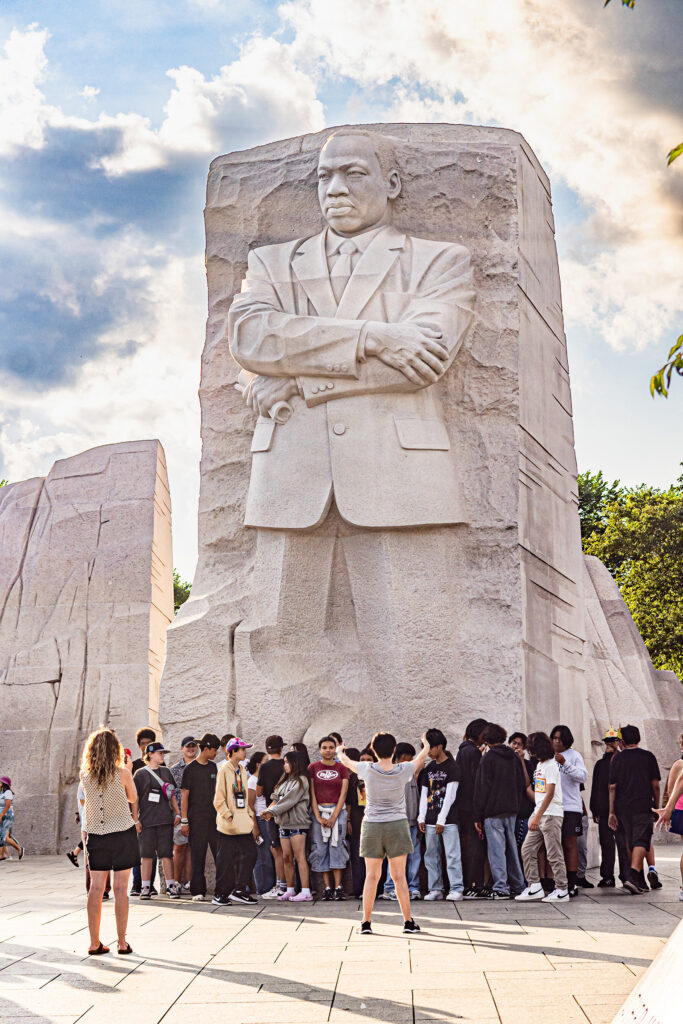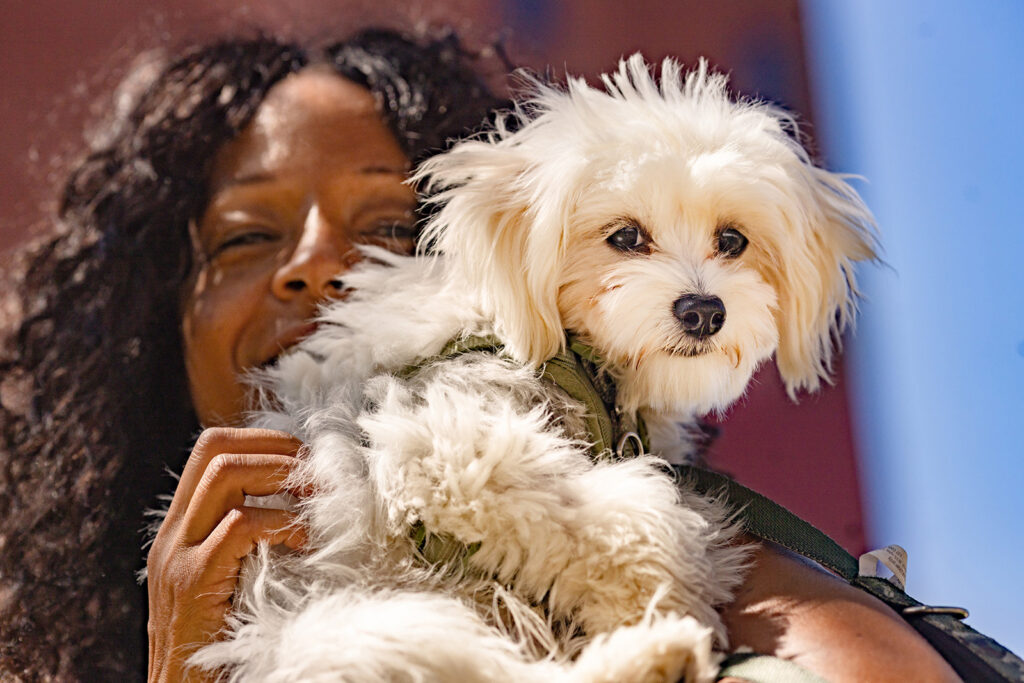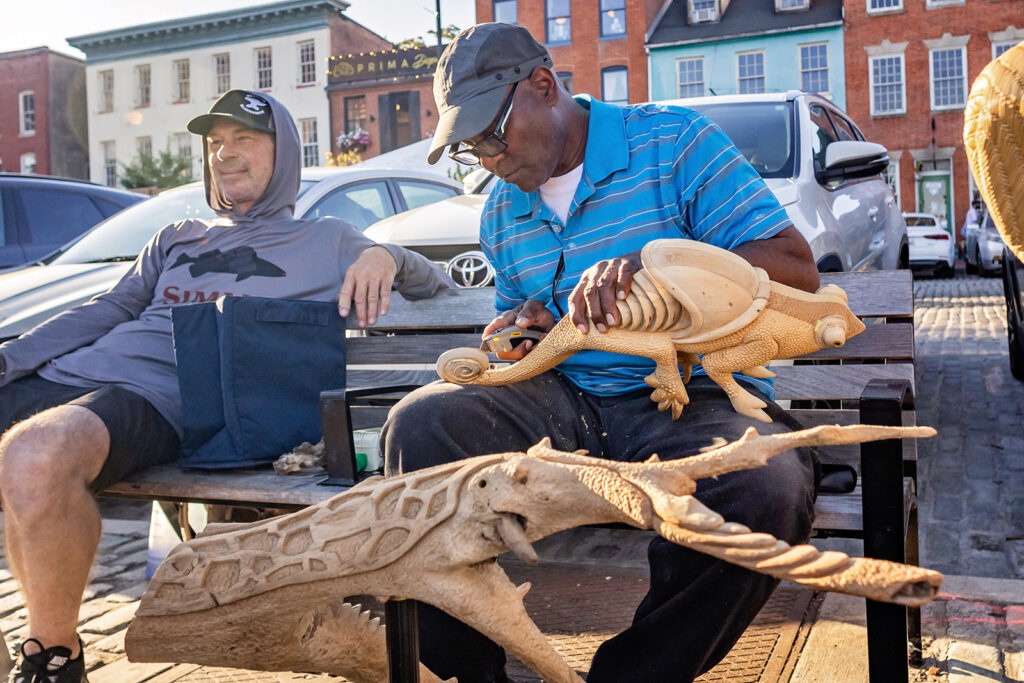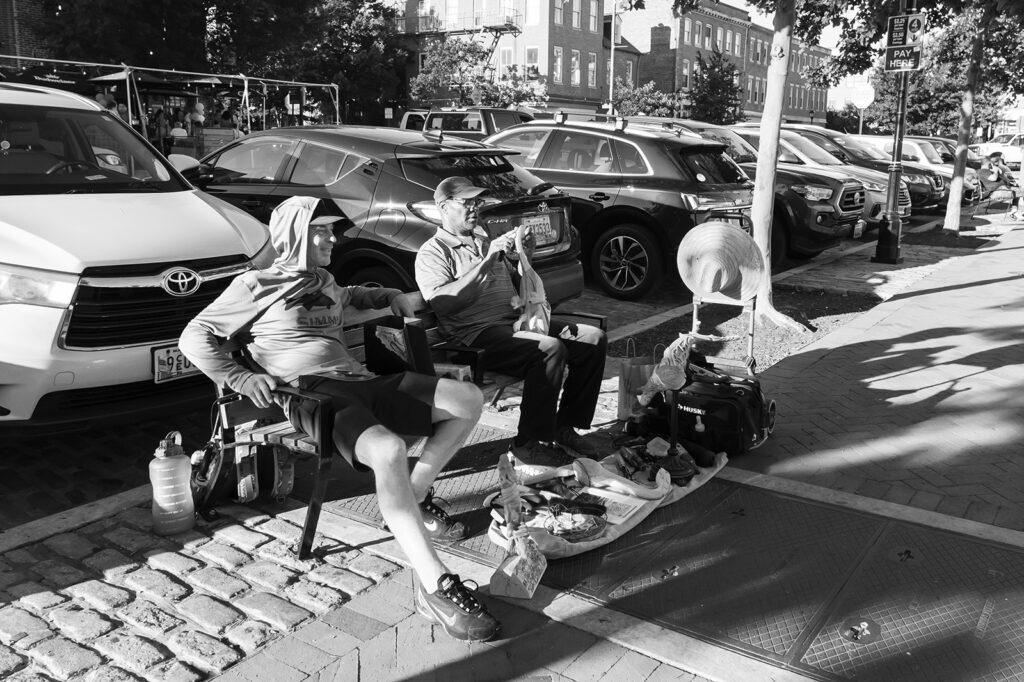I took a solo trip this Summer to explore the intrigue of street photography, and ended up spending a lot of time thinking about the ethics of street photography. This genre is something I’ve always been interested in trying my hand at.
Between the countless monuments in DC and the Pride festival in Baltimore, I came prepared to fill up several memory cards. I was going to casually walk through the streets secretly snapping photos of real moments and raw emotions. True documentary photography. My style as a photographer is a blended lifestyle portraiture. I attempt to recreate real emotions while my subjects all know I’m right there taking pictures. I give them enough guidance that I can see everyone and am encouraging connections. I do not want to interfere so much that things come across as forced or overly posed. I use a more documentary approach at events and the birth stories that I photograph. But, people still know I’m there firing away.
I knew that DC was not the haven for street photography I’ve been envisioning the last few years. At least not the gritty, real moments I imagined from a place like New York City. But, I’d never been to DC and it’s always been pretty high on my bucket list. It’s a relatively safe place for a solo traveler lugging around expensive camera gear, even late at night. Speaking of camera gear, I’ll be adding a post about recommended equipment for street photography soon!
Honestly, DC felt more like Las Vegas or even Disney World than what I imagined the political center of our country would be like.



The monuments were every bit as majestic as depicted in all of the movies. But, the number of tourists was simply overwhelming. That made it nearly impossible to create the magical photos I envisioned sans hoards of exhausted travelers. I took some awesome, traditional photographs of the monuments, but I also embraced the intensity that the tourists created.
I’ll share some of those photos in a separate post along with tips for getting great photos of your own. I plan to share night photography tricks, as well!


But, right now, I’d like to focus on the ethics of street photography. If you just move a few blocks to the north of the National Mall, life gets much more real. Painfully so. I’ve lived in and near big cities. But, I’ve been hiding out in a college town in Kansas for the last 13 years. Seeing an elderly man wearing far too many ragged clothes for the summer heat and pulling at a piece of duct tape on his midsection, the edges crusted in old blood and his face expressionless…was painfully real. That’s a picture that I not only would not share, but one I could not bring myself to take.
I think the best way to share what I saw in the streets of DC is akin to the silences in musical performances.
It’s those vulnerable, quiet moments, often between movements of a great symphony, that are every bit as important as the climax of the piece. The conductor keeps a hand in the air to let the audience know not to talk or clap. Or, in this case, not to take pictures. When you get to experience that true silence, it is incredibly powerful. There’s usually someone who thinks that’s the perfect time to release a cough held back for the last 20 minutes of music. I was almost one of those forbidden coughers with my camera. But, I’d like to embrace that silence here, a pictureless piece of my post. A moment of quiet respect for the people who call the streets their home.
At first, I planned to share some of my street photography favorites on Facebook and Instagram.
My goal as a photographer is to make people feel something. As a family photographer, that feeling is typically that kind of joy that leaps right out of the frame. You can still hear your children giggling as you swing them around, tickle their tummies, and attack them with kisses and raspberries. I found myself taking pictures of strangers enjoying themselves. The real, unposed, unprompted snapshots of their lives shared with the strangers surrounding them. But, it was the resilient humans who have forgotten what any semblance of privilege feels like that evoked the most emotion from me. And that is the emotion I found myself wanting to capture and share. That was my plan going into this journey. But, instead, I’m going to share the silence with you.
I’m not going to show you photos of the exhausted, homeless man who slept quietly on a park bench. He used his worn out shoe as a pillow, his face pressed into it the way a child might cuddle a favorite stuffed animal. Tourists buzzed by him several times a minute on rented bicycles and electric scooters. Busloads of privileged travelers passed him maybe 25 feet away.
I sat on another bench in the shade photographing the people passing by.



You will need to use your imagination for my friend asleep on the bench. I know that is not difficult. Everyone has seen that picture whether in person, in a gallery, or scrolling through your social media feeds. Yes, he was in a public place. Yes, legally I had the right to photograph that man. The law says I can visually share with you the impact the moment had on me. I could find ways to justify posting his images with the world, attempting to eliminate the blatant exploitation. Perhaps I’d share a photo where he wasn’t identifiable. Maybe a pulled back photo with the tourists, a blur of intentional motion in the foreground contrasted with the stillness of his homeless reality. My heart hurts for him as I wonder when he last slept on a real pillow. And I will not exploit him.
As I wandered the streets of Baltimore, where the homelessness was even more prevalent, I sat with the realization that my rights as a citizen and photographer were swimming in entitlement.
While I didn’t feel quite as stealthy with my camera as I expected, homeless people are an easy target. Go to any big city, and you can expect to see countless homeless people doing their best to survive. They are everywhere and probably won’t stop you from taking their picture. But, it’s much like peering into someone’s house because the streets ARE their home.
I do have some poignant, well-framed, well-lit photos of some raw moments.
But, as I noticed how easy and unfair it was of me to be documenting that reality, I shifted my focus to candid moments of people who chose to be on the streets. I photographed the people who happened to share that space with me at the same time, rather than people whose space I encroached upon. Some were dressed in colorful ways that seemed to beg my attention and a click of my camera’s shutter. I starting spending more energy capturing interactions between people (and their pets). I also found myself engaging in conversations that made my journey far more memorable and interesting.









Street photography is important. Documenting what life is like in 2024 has value. In the US, I can legally photograph anyone in a public place. But, as a family photographer, I’ve learned to respect the decision of those people who want to keep their photos private for a variety of reasons. I have friends who have never showed their child’s face on social media. I’d feel awful if I found out that I posted the only photo of a human life on Facebook or Instagram without a parent’s permission or knowledge.

In the attempt to find balance, I’ve decided I’m only going to share those stealthy people portraits on social media with permission. Any other photos with clear human subjects will only be published in blog post form where I have better control over the image. I will still only share pictures I find flattering or meaningful, and I will never share a photo of someone who tells me they are not okay with it. Especially with children, I think it’s important that they either see me take the picture and have the chance to object, or I keep it off of social media.
I took loads of pictures of street performers and other people who were attempting to draw attention to themselves that I feel much more comfortable sharing on social media. Yes, I tipped many of them, too. Lots of talent out there!

There is one gentleman from Baltimore that I’d like to highlight, Art Palmer. I found him beautifully chiseling a wooden masterpiece along the Baltimore waterfront. We chatted for a bit before I brought my camera up to my face to document his amazing work. I also wanted to document the memory for myself!


“You can’t just take my picture without asking,” he said firmly.
After 4 days of street photography, and not a single objection, I was surprised to hear that from him. I quickly lowered my camera and apologized. I brought up some of the ethical questions of street photography that had been plaguing me during my adventures. He insisted I should always have permission. I responded, saying that completely undermines the goal of capturing truly candid moments. Don’t we all behave differently when we know a camera is on us? I thanked him for his perspective and politely asked if I could take his picture. He gave me a kind smile and his permission.

A big part of me agreed with him, and I realized how much more I enjoyed taking his portrait after receiving consent.
I’ll be traveling back to DC in a few months. Between now and then, I’ll be hard at work on my client sessions, but also brainstorming a different approach to my street photography journey. I want to engage with my subjects and get permission to share those photos. I’m excited to talk to people and take some inspiring Street Portraits. That cannot replace the intimacy and impact of the candid moments, but I have always been a people person, and I find it easy to strike up conversations with strangers. I want to explore and document that part of myself as I reintegrate myself with the real world.
